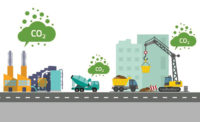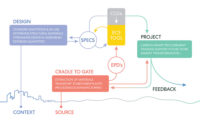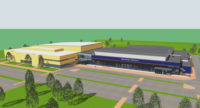Achieving ambitious greenhouse gas (GHG) emission mitigation goals in the building sector is essential to limiting global warming. It means reducing global energy and CO2-based emissions by 60% by 2050 compared with 2012. Accomplishing this goal requires firms to assess their regional challenges. Southwest AEC firms utilize more natural materials, such as stucco and adobe, due to the resources available and the desire to stay true to indigenous culture. The region draws inspiration from Pueblo architecture, with later influences from the Spanish missions and early American ranches.

Shivani Soni
As strategy and innovation lead with Microdesk, Soni guides the company, clients and other professionals to discover, collaborate and co-create smarter ways to design, build and operate.
Those materials often include clay, sand, silt, grasses, water, stone and timber, usually locally sourced. However, materials are no longer limited to what’s available regionally and delivery can increase their carbon footprint. Wood and stone can blur the line between nature and man-made materials. Thus, the AEC industry in the Southwest has been integrating more contemporary material palettes such as glazing, concrete and insulated metal panels. But the move away from traditional building techniques also increases the risk of boosting carbon impacts. This in turn leads to questions of how to address these issues sustainably from Day 1 and how to be more efficient in handling the specification and delivery of materials.
Climate emergency and urbanization are pushing Southwest firms to embrace innovative processes for designing more resilient, sustainable structures. Bioclimatic architectural processes take advantage of environmental conditions to build more sustainably. New research can provide designs that deliver maximum comfort while minimizing energy consumption. But to be truly net-zero, companies must also address both operational and embodied carbon and how it relates to the materials they select.

Luc Wing
As an architecture solutions specialist with Microdesk, Wing promotes integrating sustainable solutions and mindsets into BIM for the entire project life cycle.
Global technological advancements can help firms alter their current processes, including leveraging digital twin strategies to enable data-driven decision-making and tracking of materials. Taking these steps will provide an understanding of how to create a digital footprint that enables storage and the tracking of building data and carbon impacts throughout the life cycle of all assets. Stakeholders can investigate the most optimal configuration to reduce the footprint. New technology also facilitates processes such as generative design for predictive analysis and more informed decision-making. This lays the foundation to equip processes and workflows for a digital twin deliverable.
A digital twin can connect material and energy data, yielding discoveries that help to meet goals for carbon offsets. In turn, more sustainable materials come to the forefront. The use of “bioplastics” or “bio-composites” is on the rise, and incorporating them into everyday assemblies can have a positive, long-lasting impact. Bioplastics are products derived from plant, animal, fungal and bacterial sources—some of these materials now can be used for construction applications. Leveraging technologies also allows for better analysis. Certain properties and data points of materials can be embedded in the digital model, thus allowing designers and owners to understand their impact on the environment, cost and quality.
All too often, sustainability is presented as something overly complicated and becomes an afterthought in projects, costing owners and project stakeholders time and quality. Firms that stay on the cutting edge of innovative solutions will generate profits and play a key role in combating climate change.







Post a comment to this article
Report Abusive Comment